-
Business Services ▾
-
Company & Commercial
- Legal Services for Landlords
- Commercial Property
-
Employment Law
- - Sponsor Licences
- - Employment law solicitors and HR training UK
- - Employment Tribunals Advice
- - HR Consultancy
- - Discrimination and Family Issues in the Workplace
- - Restrictive Covenants
- - Drafting and Varying Contracts of Employment
- - Redundancies and Restructuring
- - Disciplinary Hearings, Dismissals and Grievances
- - Trade Unions and Industrial Action
- - TUPE Guidance
- Commercial Litigation
-
Legal Compliance
- Debt Recovery
- Business Recovery & Insolvency
-
Company & Commercial
-
Individual Services ▾
- Residential Property
- Public Law
- Family & Matrimonial
- Children Law
-
Clinical Negligence
- - Abuse and neglect of the elderly
- - Fracture Negligence
- - Surgical Negligence
- - GP Negligence
- - Gynaecological Claims
- - Medication and Prescription Error Advice
- - Paediatric Claims
- - Orthopaedic Negligence
- - Physiotherapy or chiropractic treatment errors
- - Ophthalmic Eye Claims
- - Cancer Misdiagnosis Claim
- - Pressure Sores
- - Inquest Representation
- - Cauda Equina Syndrome Compensation
- - Anaesthetic Awareness – Administration Mistakes
- - Birth Injuries
- - Cosmetic Surgery Mistakes
- - Negligent Cardiac Care Claims
- - Cerebral Palsy
- - Chiropractic Injury
- - Colorectal Surgery
- - Consent to Treatment
- - Dental Negligence
- - Ear, Nose and Throat
- - Sepsis
- - Personal Injury
- Wills & Probate
- Dispute Resolution
-
Sports Law
- Employment Law
-
UK COVID-19 Inquiry
- LGBTQ+ Legal Advice
15th November 2021 | Commercial Property
Building Better: Top Tips for Commercial Landlords
In what has been heralded as a ‘pivotal moment’ in the fight against climate change, leaders from around the globe united at COP26 to reach an agreement on how best to tackle the threats presented to our livelihoods and homes, most notably by global warming.
As part of the summit, we are all being encouraged to consider our carbon footprint – from the houses we live in to the shops we visit (and the types of purchases we make), our choice of commute and even the food we eat.
And the spotlight shines just as harshly on businesses, as hundreds of companies pledge ‘Net Zero’ initiatives in a bid to prove their commitment to sustainability. With the pressure on, James Young, a Partner in our Commercial Property team, explores how commercial landlords can offer innovative solutions to ensure everyone is playing their part in the fight against climate change.
Renewable energy
Solar panels have become a common feature of both the residential and commercial landscapes, as an increasing number of people look to harness the power of the sun (when it makes an appearance here in Wales!).
In the face of rising electricity costs and the adequate roof space provided by many commercial properties, solar panels are increasingly being seen as a sensible investment.
Alongside the sustainable credentials gained, there are also a number of financial benefits. You’ll likely see a cut on your energy bills and you may even be able to sell back excess energy to your supplier. With the push towards sustainable energy, governments are also offering a number of financial incentives to encourage landlords to make the shift to solar. Indeed, solar experts ‘My Power’ claim that commercial solar installations can deliver a return-on-investment of in excess of 15%.
Go Green
If you have a flat or slightly sloped roof, you may want to consider installing a ‘green roof’ – also known as a living roof. The surface is covered with a waterproof membrane, before a layer of vegetation is placed on top.
Alongside the obvious environmental benefits, as your roof works to remove CO2 from the atmosphere, other benefits include improved air quality and an increase in energy efficiency, with the ‘living roof’ acting as an additional layer of insulation.
Your roof can also assist with drainage and help to avoid flooding, as plants atop the building retain water, before naturally releasing it back into the atmosphere. SAGE estimate that a green roof can intercept between 50-75% of rainwater, with intensive designs reducing water runoff by up to 90%.
Location, Location, Location
If you’re looking to purchase or lease commercial space, you may want to take into account the location of your property and how this can bolster your green credentials.
Does the space offer convenient access to more sustainable transport links, such as buses, tubes or trains? London arguably leads the way when it comes to public transport in the UK, with almost 1.4 billion underground journeys per year. Extensions are planned across the city, with the Elizabeth Line adding 10 new stations across Central London.
Although you may not be looking to locate within the catchment area of a sprawling underground system, consider how you can reduce the impact of travel to and from your commercial space, such as encouraging environmentally friendly options like walking, cycling or car-sharing.
It’s also worth contemplating the impact of your neighbours. If your property is located in the shadows of a soaring skyscraper, then you may find yourself turning on the heating more often than if you were able to revel in hours of sunlight.
To the windows…
Far from simply being a pane of glass through which employees daydream (or brainstorm!), the windows you install can have a dramatic impact on the efficiency of your building.
When purchasing or replacing windows, make sure to take into consideration the ratings provided by the British Fenestration Ratings Council. The BRFC compare U-Value (otherwise known as heat loss), solar heat gain co-efficient, or how much a window will absorb heat from sunlight, as well as air leakage. Where possible, utilise windows rated ‘A’ for efficiency. Although perhaps a more expensive outlay, you’ll save a small fortune in heating and air-conditioning costs down the line.
If you’re undergoing a renovation process, why not take the time to consider the strategic positioning of your windows? Increased daylight not only promotes higher productivity levels among your team, but also naturally warms rooms, thus reducing the need to turn on the heating.
Turn to technology
The smart meter has become a common feature of homes across the UK, as we all look to monitor our energy usage. Why not install something similar in communal areas, such as the kitchen or staff room, where energy consumption tends to be higher?
A visual reminder of the impact of not switching off the light or leaving devices on standby could prompt more sustainable behaviours throughout the building – after all, we’re all in this together!
Get in touch
For more detailed advice on the legal considerations around your commercial property or workplace, get in touch with our expert team at hello@hardingevans.com or call 01633 244233.












